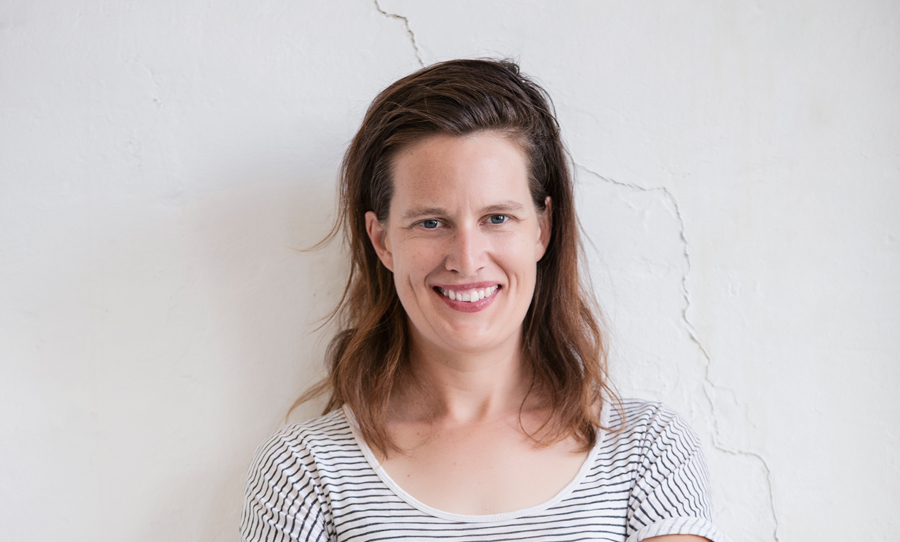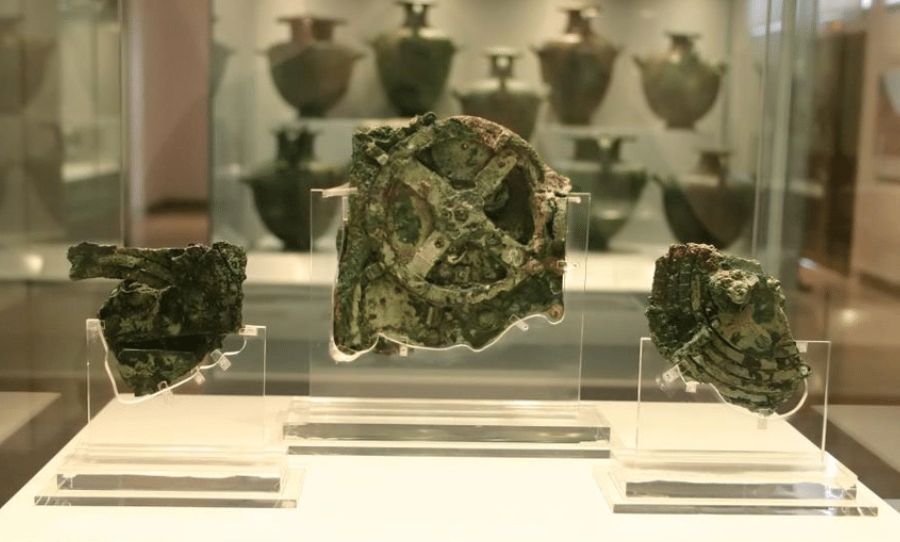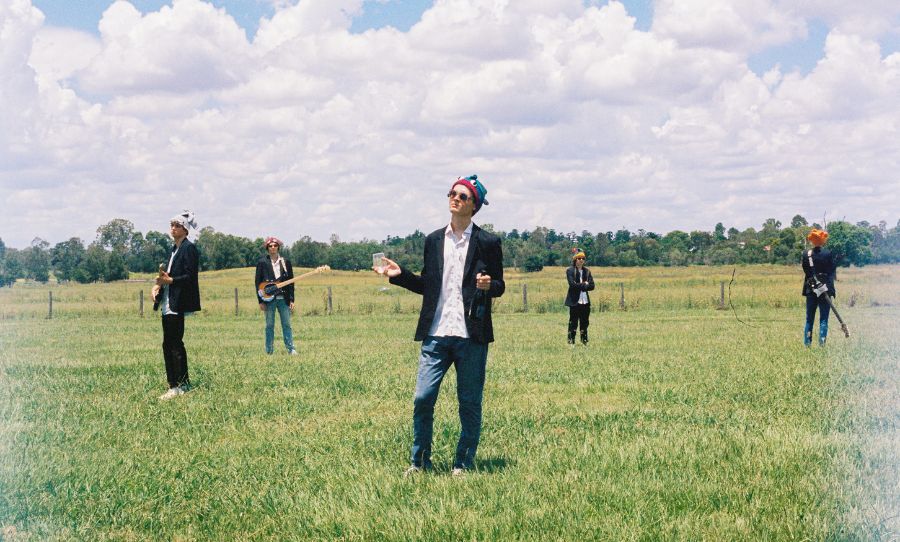In Making Australian History, Anna Clark interrogates the texts that have contributed to our national identity, using them as launchpads for new, thought-provoking conversations about who we are today.
In the opening pages of Making Australian History (Penguin), award-winning historian Anna Clark distinguishes history (the past) from capital ‘H’ History (the practice of recording it). It’s here that she sets up the premise of her book: we can learn so much about ourselves by observing how Australians of the past recorded their own stories.
It may not surprise you that much of it is problematic, to put it mildly. But what may surprise is just how pivotal the discipline of History was in shaping the narrative of the nation. It was never just about committing what had happened to the page, rather, it was used as an instrument for reinforcing the notion of progress and justifying the existence of Australia. But of course, as Clark points out, this ignores so much of what actually happened.
We caught up with Clark to chat about embracing the many perspectives of the recorded past, Australia’s prevailing narratives and counternarratives through time, and who was included — and excluded — in the tale of the nation.
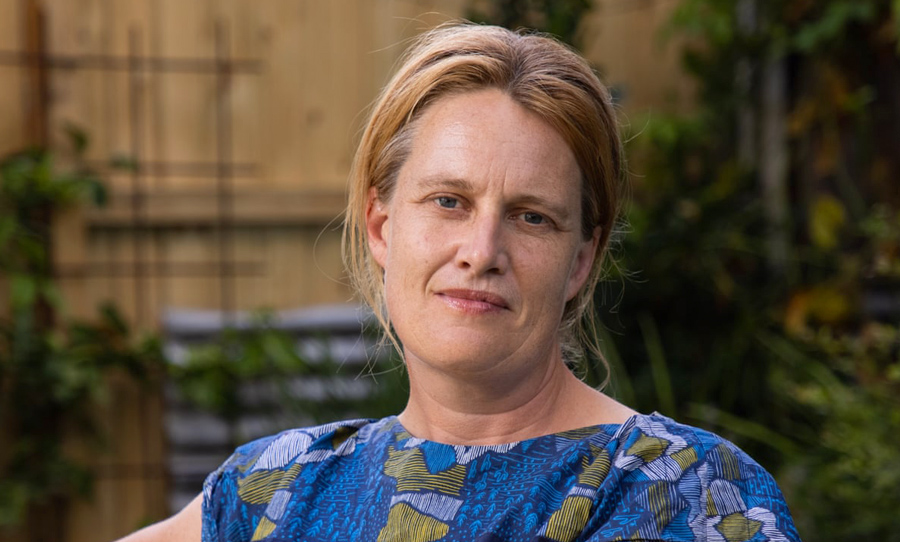
HAPPY: You mention early on that Aboriginal traditions weren’t necessary supplanted by the colonisers: both influences are literally chiselled into the landscape, side-by-side in some locations. What does tell us about the plurality of Australian history and the challenges of coming to grips with it?
ANNA: It’s a lovely question actually because is evocative of the place of Australia. Histories are all around us in the landscape, but we have to be on the lookout for them. For a long time, Australian history was dominated by books, the written word, and by certain authors: non-Indigenous, white, invariably male, university-educated historians. Meanwhile, these other forms of history were there but weren’t being included in that canon of Australian history.
HAPPY: You say that “History is subject to the very change it seeks to document?” In writing a book like this, do you think it’s a matter of overcoming that challenge, or embracing it? What kind of challenges does the slippery nature of history throw up?
ANNA: There are lots of challenges but I think you have to embrace them. I think you can’t escape the circumstances in which you’re making History — I mean that in the writing sense, not in the being a historical figure sense. I think every generation asks questions about the past that are particularly relevant to them. And the questions that we’re asking of the past are coming from our place in time and landscape.
That raises some very difficult questions because while we are judging or analysing histories from the past and putting them in historical context, we have to be aware that people will be doing that to us one day and that our judgement of previous historians and history-makers is a product of our time. So you have to live with the fact that this process is inherently subjective.
I like to explain it to my students like this: the past is something that happened and history is something that we do. History is an interpretation of the past. So of course that interpretation depends on who’s making it, when they’re making it, etc. It’s a realisation that can be fraught with challenges, but it also frees you up, because you can proceed in the knowledge that you’re contributing to a conversation that’s always changing.
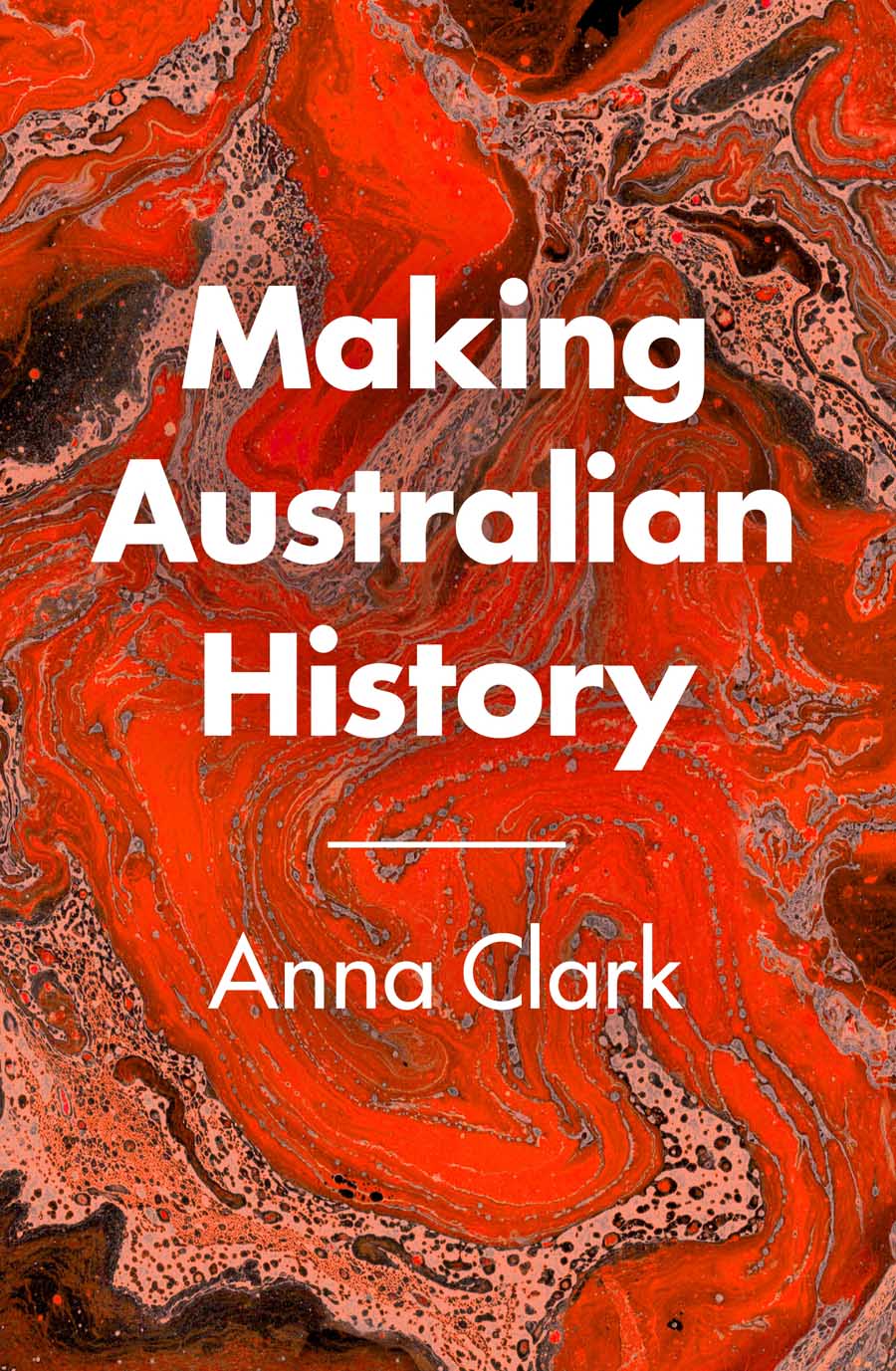
HAPPY: I found the logic of some of the colonial histories that you talk about in the book to be baffling. The common assertion that Australia was a place with no past kept coming up again and again. It’s so hard to grasp the mindset of the time.
ANNA: When you think about it from our perspective it’s an illogic: Aboriginal people are so ancient that they’re not historical, they’re pre-historical. And perversely, that very ancientness prevents them from taking part in the history of the nation, which is about progress and modernity and nation-building. It’s a real window into that prescriptive understanding of what history is and what it should do for Australia.
Anything that was outside that idea of advancement — the lives of normal people, a woman getting an illegal abortion, a child going to school, someone in an insane asylum, or the life of an Aboriginal person — wasn’t considered to be part of that nation-building moment. Over time, that understanding of the role and function of history has changed and that’s why our understanding of who’s in history and who’s outside it has changed as well.
HAPPY: In the chapter Beginnings, you note that histories of Australia were already being compiled in Britain before Europeans had barely set foot on the continent. How important was the making of history — erroneous as it was — to justify the colonial project?
ANNA: I didn’t think about that too much until I started researching for this book and reading these incredible sources that suggest that history begins with colonisation and what mattered before then was not a matter for the history books. It made me realise that history was tied to the colonial project because it gives it permanence and legitimacy. But not only that: it’s also a narrative and a destiny. It had a sense of inevitability. The worry was that the colony had no history, so it was important because it gave the colonial project a chapter in the imperial history of Britain.
HAPPY: And beyond the beginnings of the colony, history became imperative to the building of Australia’s sense of nationhood, through education in schools. How important was this process in creating an Australia that’s recognisable today?
ANNA: History, as a discipline, has become so much more democratic in who we acknowledge as the subjects of history, but also much more democratic in what we acknowledge history to be. However, the delivery of history would still be recognisable to someone from the 1890s: There are still books and they’re still given to school children. They still prioritise Australia. And in many cases, they emphasise the importance of studying history to make Australia better.
But nowadays, it’s not necessarily to make Australia better in the proud, jingoistic sense; history syllabuses and textbooks are much more complex and inclusive than they used to be. Even if the purpose of learning history is to make Australia a better place, we’re more likely to learn about some of the terrible things that happened, which were noticeably absent from the textbooks of the 19th and early 20th centuries. But there’s still a strand of morality, which tells us why we still bother to teach and learn history.
HAPPY: In Contact, the trajectory of recorded history on the colonial side indicates an initial curiosity, then an eventual indifference on the colonisers’ part to the land’s first inhabitants. But can you point out some of the recordings of contact from an Aboriginal perspective?
ANNA: Yes, they are there and really important to acknowledge. I’m speaking to you from Sydney in Cadigal Country and all around us are incredible rock engravings of Aboriginal cosmologies, the natural world, and also, of contact. Just up near the Hawkesbury River, I saw an engraving of a colonial woman in a distinctively triangular dress. And near her, I saw engravings of masted ships. It doesn’t take a huge leap of imagination to think that these are attempts to put down a history of contact.
By putting them into the rocks next to these other engravings, they’re absorbing the colonisers into an Aboriginal worldview and into an Aboriginal mode of history telling. I guess they’re difficult texts to work with because they don’t have an author, they don’t have an exact time that we can locate them in, but they’re still unquestionably histories of contact. And while we have so many perspectives ‘from the boat’ it’s important for historians to cast their net wide and look at the view ‘to the boat’ as well.
Well that was a bloody lovely evening: surrounded by books and actual people, in great conversation with @ClareMonagle . Many thanks to @Gleebooks @MeredithCurnow @PenguinBooksAus for helping nudge Making Australian History out into the world. https://t.co/BrhD7tqDSQ
— Anna Clark (@annahopeclark) February 2, 2022
HAPPY: You cite Myra Willard’s text on the history of the White Australia Policy, written in 1923 and problematic as it is, as the authority on the topic, to this day. Can you tell me a bit about the ideology, or even paranoia, of the fledgling nation at that time?
ANNA: It’s an area of history that I didn’t know a lot about and I’d never heard of Myra Willard before. I was doing some work on the history of Melbourne University Press and I came across this book, which was The History of the White Australia Policy, which was the first book that the press published.
In the history textbooks of today, the chapter on the White Australia Policy might be looked on with a degree of judgement and criticism. But at the time, it was a bold experiment in social cohesion. So along with the growth of the Labor Party, growth of the minimum wage, the growth of the welfare state, we had the White Australia Policy. It was seen as this social and democratic experiment that would minimise social unrest. At the time, we were constantly comparing ourselves to South Africa and North America — in both the U.S. with African-American people who were former slaves, and in Canada with the French-speaking Quebecois — and thinking “Australia was going to be different.”
So it was extraordinary to look back and see how positive people were about it. There was some anxiety about how Australia would be seen by the world. There were significant diplomatic protests made by Japan, China, and India because it was so racist and Australia was like, “no, we just want to keep Australia moving forward… together.”
HAPPY: Gosh, it’s hard to come up with a euphemism for that.
ANNA: Yes, it sounds so absurd now, but it gives us a sense of how values can change over time. There’s a lovely quote by the historian Greg Denning who said, “it’s a mistake to think of the past as us in funny clothes.” These are different people with different values.
HAPPY: Speaking of anachronisms, it’s hard to look back at the 1938 sesquicentenary fanfare and not cringe. How much of the discipline of History is about telling people what they want to believe about themselves?
ANNA: My research has tried to tell that story: there’s a constant process of curation depending upon the prevailing values of the day. But I kept thinking, in 50 years time, how will people view us? I’ve just written a book about how subjective everything is, so I can’t say that I’m the only objective one in all of this (laughs)!
HAPPY: But an important counternarrative was running at the same time in the Day of Mourning protest. Can you tell us about that?
ANNA: It’s a good point that you’ve raised because it shows us that the purpose and function of History have changed. There was history-making at the time that presented some very important counternarratives to the celebratory myth. If the effects of colonisation on Indigenous people were outside of the national story, then where was it? And what did it mean for Australia’s history if it didn’t include that? You could write another history of Australia comprised of only the stories that had been excluded and it would be equally as telling.
HAPPY: Further to the point of exclusion, but turning to gender: The “heroic, laconic white male” as you point out, was emblematic of the national story. How has Australian history about women — and history told from women’s perspectives — changed the way we think about history, and how it’s recorded?
ANNA: One of the main reasons why we can sort of have a chuckle about how strange and foreign and implausible early histories are is because gender historians and feminist historians entered the public debate in the 1960s and 1970s and said “that’s not the whole story.” The idea of inexorable national progress isn’t good enough. History isn’t only made by the signing of bills by politicians on their desks. It’s also made by the cleaner who comes and mops up afterwards. Or by women who have struggled with their children. So much of what we include now as legitimate forms of history is because of that.
But it was not just a feminist project. It happened in sync with other projects around Aboriginal rights, migrant rights, and civil rights. But there was a particularly lively band of feminist historians in Australia that really upended the discipline and asked “what about the other half of the population? Are they just living in a vacuum?” These ignored stories of women are all part of the fabric of what we know as Australia.
HAPPY: One of the key lessons I took from the book was that history, especially our local history, is worth pursuing. But it is also intimidating. So how do you start? Where do you start? What’s your advice for people wishing who want to better understand the history of Australia?
ANNA: General histories are a great place to start, but more specifically, I think you should go to the art gallery, listen to podcasts, pick up a newspaper from the 1870s and have a look at it, ask your grandparents what Australia was like in the 1950s, think about what you were taught and what you weren’t taught in school. There’s just so much stuff out there now. So many books and archives are being digitised, so if you have access to the internet, you can be a researcher yourself. The story of a small town or a family can tell us just as much about a nation as a big old history book. The big old history books still have a place, but not the only place.
Making Australian History is out now via Penguin.
